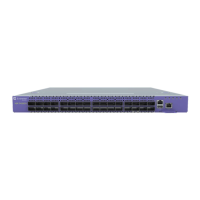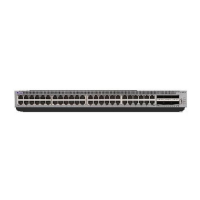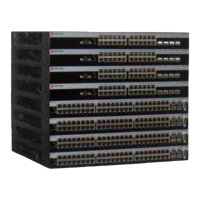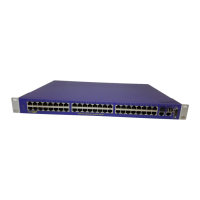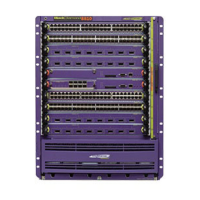Figure 3: Switches Connected to Form a Stack
Using the SummitStack feature—part of the SwitchEngine Edge license—a stack can
combine switches from different series, provided that every switch in the stack:
• Runs in the same partition (primary or secondary).
• Runs the same version of SwitchEngine.
• Includes support for stacking.
See Combine Switches from Different Series on page 31 for information about which
switch series can be combined to form a stack.
The following topics introduce you to the basic principles of stacking and provide
recommendations for creating stacks.
More information to answer your questions about stacking and help you plan your
conguration is available on the Extreme Networks GTAC Knowledge Base.
Build Basic Stacks
A stack can be created in either of two ways:
• In
native stacking
, switches are connected using either designated Ethernet data
ports or dedicated stacking connectors.
• In
alternate stacking
, switches are connected using 10-Gbps Ethernet data ports that
have been congured for stacking. These ports are located either on the switch itself
or on option cards installed on either the front or the rear of the switch.
Note
Native stacking can be congured using Native-400 utilizing QSFP28 optics or
Native-400-Alternative-Conguration using long range AOC optics.
When planning and building your stack, be sure to follow port compatibility and
cabling recommendations as described in this chapter.
Build Stacks Build Basic Stacks
Extreme 7720 Hardware Installation Guide 21

